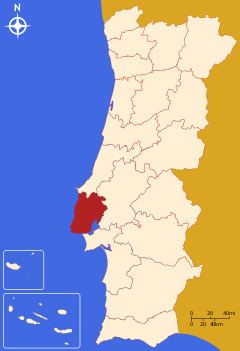Dates 7 Nov 2014 – 21 Nov 2014 | ||
 | ||
The Legionella outbreak in Portugal began in November 2014 in Póvoa de Santa Iria, Forte da Casa and Vialonga (Vila Franca de Xira, Lisbon). As of 5 December 2014, 336 people have become infected and eleven have died. Cases in Luanda, Angola and Lima, Peru were suspected to be connected to the outbreak, but were later found to be unrelated. According to the Wikipedia list of Legionnaires' disease outbreaks, the outbreak was the second largest of all time, though not the second deadliest.
Contents
Paulo Macedo, the Health Minister, declared the outbreak over on 21 November. He stated however that, new deaths could be registered.
Current status
On 7 November 2014, authorities were alerted about an unusually large number of patients infected with Legionella: in 24 hours, the Vila Franca de Xira hospital received 27 patients with this infection. With six more cases from other hospitals in Lisbon. The municipality promptly asserted that tests carried out by the municipal water and sanitation authority (SMAS) did not find any evidence of Legionella in the tap water.
Patients were from Forte da Casa, Póvoa de Santa Iria, Vialonga, in Vila Franca de Xira, and also Bucelas, Loures and Samora Correia, Benavente.
On the first half of 8 November, there were already 59 known cases. At the end of the same day, there were 90 known cases of Legionella including 1 fatality, with more cases to be expected. Authorities have, however, stated that the first fatality was a 59-year-old male that was a heavy smoker who died 3 hours after arriving at the hospital.
On 9 November, the number of cases was updated to 120. Two more people, a 66-year-old male and an 81-year-old female, both with preexisting conditions, died in the hospital, raising the number of fatalities to 3. 6 more people are in critical condition. In the afternoon, the number of cases was reported to be 180 and 4 fatalities. 24 people are in the intensive care unit. One other fatality is being investigated and was very likely also caused by Legionella.
As of 12 November, there were 302 known cases and 7 fatalities related to this outbreak, with 49 people in intensive care units and two more deaths under investigation.
On 13 November, 311 cases were observed, with 7 fatalities, and the two cases that had been observed abroad were found to be unrelated to this outbreak.
On 17 November, there were 331 cases and 8 fatalities.
On 21 November, there were 336 cases and 10 fatalities. The outbreak was declared to be over.
On 4 December, a 43-year-old man died from Legionella, raising the number of fatalities to 11.
Prevention measures
Authorities recommend people to avoid taking showers and using high-pressure water sources as well as avoiding air-conditioning devices and places where airborne water particles are present. Blood donations in some parts of the affected district have already been halted.
